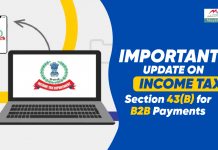Section 92C of the Income Tax Act, 1961 is a crucial provision that deals with the transfer pricing regulations in India. It is aimed at ensuring that cross-border transactions between related parties are conducted at arm’s length prices. In this blog post, we will discuss Section 92C of the Income Tax Act in detail, including its scope, applicability, and key provisions.
What is Section 92C of the Income Tax Act?
Section 92C of the Income Tax Act, 1961 deals with the computation of arm’s length price for international transactions or specified domestic transactions between related parties. The section provides that any income arising from an international transaction or specified domestic transaction shall be computed at an arm’s length price.
Scope of Section 92C
Section 92C applies to all international transactions and specified domestic transactions between related parties. An international transaction refers to a transaction between two or more associated enterprises, where at least one enterprise is a non-resident. On the other hand, a specified domestic transaction refers to any transaction between two or more related parties, where the aggregate value of such transactions exceeds INR 20 crores.
Applicability of Section 92C
Section 92C is applicable to all taxpayers who enter into international transactions or specified domestic transactions with related parties. Related parties refer to two enterprises that are under common control, whether directly or indirectly.
Key Provisions of Section 92C
- Arm’s Length Price:
The key provision of Section 92C is the computation of the arm’s length price. The arm’s length price is the price that would have been charged in a transaction between unrelated parties under similar circumstances. Section 92C requires taxpayers to determine the arm’s length price for their international transactions and specified domestic transactions.
- Methods for determining Arm’s Length Price:
Section 92C provides five methods for determining the arm’s length price. These methods are:
a) Comparable Uncontrolled Price (CUP) Method b) Resale Price Method (RPM) c) Cost Plus Method (CPM) d) Transactional Net Margin Method (TNMM) e) Profit Split Method (PSM)
Taxpayers must use one of these methods to determine the arm’s length price. However, if none of these methods are applicable, the taxpayer may use any other method that is consistent with the principles of transfer pricing.
- Documentation:
Taxpayers must maintain detailed documentation to support their determination of the arm’s length price. This documentation must be maintained for a period of eight years from the end of the relevant assessment year.
- Penalties:
Section 271AA of the Income Tax Act provides for penalties for non-compliance with transfer pricing regulations. If a taxpayer fails to maintain adequate documentation or does not report an international transaction or specified domestic transaction, they may be subject to a penalty of 2% of the value of the transaction.
Transfer pricing has become a significant concern for tax authorities worldwide due to the increasing number of cross-border transactions between related parties. It is a technique used by multinational companies to shift profits to low-tax jurisdictions by manipulating prices for goods, services, or intangible assets in transactions between related parties.
To prevent such manipulation and ensure that the profits are fairly attributed to the countries where the economic activities occur, many countries have introduced transfer pricing regulations, including India. Section 92C of the Income Tax Act is India’s primary legislation on transfer pricing.
The section provides guidance on determining the arm’s length price for international transactions or specified domestic transactions between related parties. The arm’s length price is the price that would have been charged in a transaction between unrelated parties under similar circumstances. This price ensures that the profits of a transaction are fairly distributed among the related parties involved.
The section provides five methods for determining the arm’s length price, namely the Comparable Uncontrolled Price (CUP) Method, Resale Price Method (RPM), Cost Plus Method (CPM), Transactional Net Margin Method (TNMM), and Profit Split Method (PSM). Taxpayers must use one of these methods to determine the arm’s length price. However, if none of these methods are applicable, the taxpayer may use any other method that is consistent with the principles of transfer pricing.
Taxpayers must maintain detailed documentation to support their determination of the arm’s length price. This documentation must be maintained for a period of eight years from the end of the relevant assessment year. Failure to maintain adequate documentation or not reporting an international transaction or specified domestic transaction may result in a penalty of 2% of the value of the transaction.
One of the key objectives of transfer pricing regulations, including Section 92C of the Income Tax Act, is to prevent tax evasion by multinational companies. By manipulating prices in cross-border transactions between related parties, multinational companies can shift their profits to low-tax jurisdictions, resulting in reduced tax liabilities in the countries where they conduct their business activities.
To prevent this practice, Section 92C requires taxpayers to determine the arm’s length price for their cross-border transactions with related parties. The arm’s length price ensures that the profits of the transaction are fairly distributed among the related parties involved, based on the value of the economic activities conducted in each country.
In addition to determining the arm’s length price, taxpayers must also maintain detailed documentation to support their transfer pricing practices. This documentation must be maintained for a period of eight years from the end of the relevant assessment year.
Conclusion
In conclusion, Section 92C of the Income Tax Act is a vital provision that governs transfer pricing regulations in India. It requires taxpayers to determine the arm’s length price for their international transactions or specified domestic transactions with related parties. Taxpayers must maintain detailed documentation to support their determination of the arm’s length price and may be subject to penalties for non-compliance. By complying with Section 92C, taxpayers can ensure that their cross-border transactions are conducted at fair market value and avoid potential tax disputes with the authorities.
Read more useful content:
- section 145 of income tax act
- section 10e of income tax act
- section 9 of the income tax act
- section 94b of income tax act
- section 206aa of income tax act
Frequently Asked Questions (FAQs)
What is Section 92C of the Income Tax Act?
Section 92C of the Income Tax Act is a provision that outlines the methods for determining the arm’s length price for cross-border transactions or specified domestic transactions between related parties.
Who is covered under Section 92C?
Section 92C applies to all taxpayers who engage in cross-border transactions or specified domestic transactions with related parties.
What is the arm’s length price?
The arm’s length price is the price that would have been charged in a transaction between unrelated parties under similar circumstances.
What are the methods for determining the arm’s length price?
There are five methods for determining the arm’s length price: the Comparable Uncontrolled Price (CUP) Method, Resale Price Method (RPM), Cost Plus Method (CPM), Transactional Net Margin Method (TNMM), and Profit Split Method (PSM).
What is the purpose of determining the arm’s length price?
The purpose of determining the arm’s length price is to ensure that the profits of the transaction are fairly distributed among the related parties based on the value of the economic activities conducted in each country.
What documentation must taxpayers maintain to support their transfer pricing practices?
Taxpayers must maintain detailed documentation to support their transfer pricing practices, including financial statements, contracts, invoices, and other relevant documents.
How long must taxpayers maintain documentation related to their transfer pricing practices?
Taxpayers must maintain documentation related to their transfer pricing practices for a period of eight years from the end of the relevant assessment year.
What are the consequences of not complying with Section 92C?
Failure to comply with Section 92C may result in penalties, interest, and potential tax disputes with the tax authorities.
Can taxpayers use methods other than the five listed methods to determine the arm’s length price?
Taxpayers may use any method that is consistent with the principles of transfer pricing if none of the five methods are applicable.
What are the penalties for not reporting an international transaction or specified domestic transaction?
Taxpayers who fail to report an international transaction or specified domestic transaction may face a penalty of 2% of the value of the transaction.

































